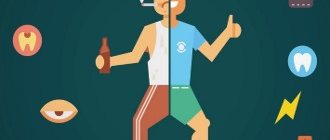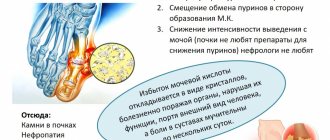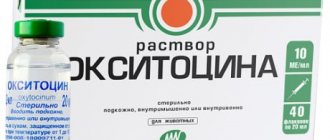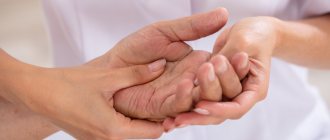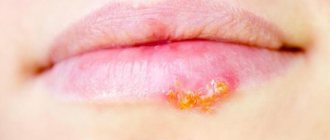Urologist
Belkin
Andrey Ivanovich
19 years of experience
Urologist of the first category, member of the European Association of Urology
Make an appointment
An overactive bladder is a pathology with spontaneous contractions of the muscle (detrusor), which entails defecation of the organ. Such muscle impulses are accompanied by severe painful sensations.
A common concomitant pathology is urinary incontinence, which requires immediate treatment. It should be understood that the syndrome is considered a pathology and a disease that needs to be treated with medications. This condition is not an age-related norm at any age.
About the disease
Overactive bladder syndrome is a dysfunction of the organ when there is an uncontrollable urge to go to the toilet. This pathology is observed most often in women, but men are also susceptible to the disease. If you notice signs and symptoms of a pathological condition, you must immediately visit a specialist who will diagnose and prescribe appropriate medication.
A doctor should be consulted if the patient experiences incontinence, a frequent and unpleasant desire to visit the toilet, or a constant feeling of a full bladder. With timely treatment, the disease can be cured, but if left untreated, the problem worsens, leading to significant complications and associated pathologies. With the disease, the patient feels significant discomfort and limited movement, since he needs to constantly visit the toilet.
Normally, the standard number of urinations per day is up to 8 times with a norm of 2 liters of urine, depending on the volume of fluid consumed. In the presence of a pathological syndrome, the volume of urine remains the same, but the patient more often feels the desire to urinate. The disease develops due to a sharp increase in the conductivity of impulses in the nerve endings of the bladder. Therefore, even the slightest influence on the nerve endings provokes muscle contraction, then the person feels the urge to urinate.
OAB in children
The problem of OAB is not related to the age category, and children quite often outgrow this condition upon reaching seven years of age. If we are talking about incontinence or excessively frequent urinary processes in a child under three years old, this phenomenon should be treated as completely normal and not a problem.
Let's consider what factors can provoke an overactive bladder in children:
- Development of infectious processes in the urinary tract.
- Presence of neurological diseases.
- Development of acute or chronic constipation.
- The occurrence of stressful situations, especially if they are associated with the urination process.
- Inability to go to the toilet for a long time.
- Overactive bladder syndrome occurs when the capacity of the organ is not large enough.
- Presence of foods containing caffeine in the diet. This applies to chocolate, sweet carbonated waters and tea.
- Structural changes affecting the organs of the urinary system.
An allergic reaction to certain foods and irritation of the organ lining can have a negative impact. According to foreign statistics, after a child turns five years old, cases of OAB in this age category decrease, this figure reaches about 15%. As children grow older, they acquire the ability to respond in a timely manner to signals sent by the body indicating the need to go to the toilet.
Causes
This condition can be provoked by neurogenic or other causes that require timely treatment. The first category includes the following:
- the main reason is brain disorders and pathologies (sclerosis, encephalitis, malignant tumors, Alzheimer's disease);
- diabetes;
- alcohol abuse;
- traumatic brain injury, stroke;
- congenital pathologies.
Other reasons include age-related changes, concomitant pathologies of the genitourinary organs, anatomical structure of organs, and hormonal imbalances. Also, patients who experience stress and depression, disorders, intestinal pathology with irritated mucosa, may suffer from bladder diseases, for which drug treatment is inevitable.
With this disease, the patient experiences general discomfort as sleep disorders, depressive states, and various urinary tract infections develop. Therefore, if even the slightest symptoms are detected, you need to visit a qualified specialist who will prescribe effective medications depending on the causes of the pathology.
How to diagnose an overactive bladder?
To begin with, the doctor needs information about your past and current health problems, what symptoms you have had and how long they have bothered you, what medications you take, and how much fluid you drink during the day.
Urologists perform examinations aimed at finding out the causes of your complaints, and also assess the condition of the pelvic organs and rectum in women and the prostate and rectum in men.
It is necessary to conduct ultrasound diagnostics of the pelvic organs in order to exclude concomitant diseases of the bladder and determine residual urine.
Laboratory tests of urine are performed to rule out inflammation and infection of the bladder.
It is recommended to keep a voiding diary to learn more about your symptoms.
Symptoms
The main symptoms of the disease include the following conditions:
- an urgent urge to go to the toilet that a person cannot control. This symptom of the disease manifests itself as an urgent and suddenly appearing need to visit the toilet without preliminary urges, that is, the desire increases instantly, and not gradually. During the day, the frequency of such urges can reach 8 times or more. Conditions are also possible when various sounds, such as the babbling of liquid, provoke urges and uncontrolled urination;
- frequent urination, even if the bladder is almost empty;
- imperative incontinence, that is, uncontrollable leakage of urine that the patient is unable to contain;
- a feeling of incomplete emptying of the bladder, even after urinating completely. Moreover, the total volume of urine per day does not exceed the norm for an adult, approximately 1.5-2 liters;
- nocturia, that is, frequent night trips to the toilet (two or more). This sign is an alarm bell if observed every night, and can cause more serious pathologies.
Are you experiencing symptoms of an overactive bladder?
Only a doctor can accurately diagnose the disease. Don't delay your consultation - call
Diagnostics: how it goes, what procedures are performed
Diagnosis of overactive bladder syndrome begins with informing the doctor about the patient’s complaints and medical history. One of the key elements of diagnosis is the analysis of the number of urinations during the day and at night. Monitoring is carried out using the patient's diary, in which it is necessary to enter data on urination for three days.
A diagnosis of pathology in the bladder is made if the patient urinates more than 8 times a day, with uncontrollable urges occurring at least twice a day. The doctor also prescribes laboratory tests, which include the following studies to determine the causes of the pathological condition:
- bacteriological tests to detect the presence of infection in the genitourinary system;
- cystoscopy and urethroscopy;
- Ultrasound, which examines the kidneys, bladder, and prostate gland.
Through these procedures, during an outpatient examination, the doctor identifies various pathologies of the genitourinary system that arise along with the symptoms that characterize an overactive bladder. In order to fully confirm the diagnosis and prescribe appropriate treatment, a urodynamic analysis with fullness cystometry is performed. That is, the Doctor records an increase in detrusor pressure during urgency when the bladder is full.
It is also necessary to inform the specialist about the medications you are taking, since some of them may worsen the symptoms of incontinence.
It is necessary to come for diagnostics with a slightly full bladder, since this way a more detailed ultrasound examination can be carried out, on the basis of which effective treatment will be prescribed. It is also recommended that you first fill out a urination diary for three days, which will allow the doctor to get a complete picture of the patient’s medical history. The following data must be entered into the diary: volume of urine, muscle tension during urination, degree of leakage and intolerance of urge, volume of fluid drunk.
Clinical observation No. 5
A 28-year-old patient complained of difficulty urinating, periodically arising in response to a full bladder, headaches, flushing of the skin of the face and neck, profuse sweating, accompanied by a rise in blood pressure up to 180/100 mmHg. Art.
From the anamnesis it is known that in January 2015 the man received a spinal cord injury at the level of the C4–C5 vertebrae with a spinal cord contusion. He was operated on and underwent spinal fusion of C4–C6. Since February 2015, the patient’s condition allowed him to begin active rehabilitation. Since April 2015, there has been a significant improvement in his condition; he was able to stand without support. In the first 2 months. After surgical treatment, the patient had cystostomy drainage. Then the feeling of the urge to urinate returned to him, and involuntary urination in small portions, of an urgent nature, was restored. The cystostomy fistula was healed and the patient began using a condom. Since May 2021, the condition has worsened and the above symptoms have appeared. During a neurological examination, the level of damage to the nervous system was determined as motor from the level of the C4 segment, sensory - from the C5 segment, reflexes 4+ in all tests on all extremities. Clonus from the hands is greater than from the feet. Muscle tone was assessed as spasticity of 2 points on the Ashforth scale in the legs, 3 points in the arms. ASIA Score: C. Can rise from a chair with minimal support. It takes time to initiate walking. Can sit without support. Walking is spastic. Signs of severe autonomic dysreflexia to cold and bladder overflow.
The urine analysis showed no signs of inflammation or bacterial contamination. According to ultrasonography, there are no structural changes in the urinary tract. The average volume of residual urine is 200 ml. During neurourological examination: bright bulbocavernous and anal reflexes. Urination in small portions is frequent and urgent, initiated by irritation of the skin of the anterior abdominal wall in the area of the bladder. Episodes of headaches with skin hyperemia and high blood pressure (up to 180/100 mm Hg with a base blood pressure of 110/70 mm Hg) occur 1–2 times a day. These symptoms are regarded as autonomic dysreflexia, the main characteristic of which is a rise in blood pressure by 20 mmHg. Art. from the baseline value in response to triggers, in this case the trigger was bladder overflow. According to a urodynamic study, the patient has phase detrusor hyperactivity with a maximum detrusor pressure of 79 cmH2O. Art. The maximum pressure at the leak point was 69 cmH2O. Art.
In order to relieve neurogenic detrusor overactivity, the patient was prescribed fesoterodine (Toviaz®) on an ongoing basis at a dosage of 8 mg/day, with transfer to periodic catheterization of the bladder. At a follow-up examination a month later, the patient's episodes of autonomic dysreflexia associated with bladder overflow disappeared. He noted a significant improvement in his quality of life. Control urodynamic study after 3 months. showed a significant reduction in maximum detrusor pressure and detrusor pressure at the leak point.
This clinical example showed the possibility of m-anticholinergic in relieving neurogenic detrusor hyperactivity and autonomic dysreflexia. Autonomic dysreflexia occurs at a high level of spinal cord injury, above the Th6 segment [13]. It has extremely negative consequences for the patient’s quality of life and significantly worsens his comorbid background. Today, research is underway on the use of fesoterodine to relieve autonomic dysreflexia and alleviate suffering in the most difficult patients - disabled people with spinal cord injury [14].
Which doctor should I contact?
For treatment of a disease such as overactive bladder, it is necessary to contact a urologist who can conduct qualified diagnostics and establish a competent diagnosis, taking into account the causes and symptoms of the disease that the patient has. It is wrong to contact a gynecologist with this disease, since this specialist can only indirectly treat the pathology, but will not be able to prescribe competent treatment.
It is often necessary to initially visit a therapist, who will refer you to a specialist who treats a specific problem. Patients can undergo examination at the JSC Meditsina clinic in Moscow, where qualified specialists work to help cope with problems of varying severity. On the clinic’s website, visitors can get acquainted with the doctors who see them, their certificates and specialization.
OAB in men
Overactive bladder, according to various sources, occurs in 15-16 percent of men, and symptoms of the disease more often appear with age.
One of the most common causes of OAB symptoms in men is an enlarged prostate. The prostate may simply increase in size as you age, or it may be a sign of a serious disease, such as prostate cancer. If the prostate becomes large enough, it interferes with the flow of urine from the urethra. In addition, hyperactivity occurs due to a number of other factors:
- Urinary tract infections;
- Prostate and bladder stones;
- Uncontrolled diabetes;
- Poor nutrition and sedentary lifestyle;
- Taking certain types of medications (caffeine, diuretics;)
- Neurological conditions such as Parkinson's disease, etc.
Symptoms of OAB can affect every aspect of a person's life. People usually perceive this problem as personal, so they often do not seek medical help until the last minute. The doctors at our clinic understand the sensitivity of this problem and will provide the most comfortable treatment possible. Fortunately, there are several effective treatments available.
Treatment: modern techniques
Several treatment approaches have been developed. The chosen technique depends on how severe the symptoms are and the stage of the disease.
For mild symptoms, exercises can be used as prevention and treatment to train the bladder muscles so that the patient can control urge and urination. The main goal of such exercises is to go to the toilet less often due to the fact that the muscles will be able to hold an increased amount of urine. The training includes two stages: going to the toilet if necessary in the morning and practicing urinary control throughout the day.
At the first stage of treatment, the patient learns to control urges and tries to visit the toilet at increased intervals. So, if previously the patient went to the toilet every half hour, the time gradually increases to 45 minutes or an hour. If you have a strong and uncontrollable urge to urinate when your bladder is empty, you can perform Kegel exercises by contracting your muscles. It is necessary to gradually increase the intervals between urinations. The norm is to visit the toilet 4-5 times during the day and once at night.
Treatment methods
There are several options to help you manage your bladder. These include:
Behavioral therapy: Often the first meaningful steps towards treatment. The patient can and should make some changes to his lifestyle and diet (avoiding caffeine, alcohol and spicy foods).
Quitting smoking and losing excess weight can also improve the patient's condition. Your healthcare provider may ask you to keep a daily voiding diary to track your trips to the toilet. Behavioral changes may include going to the bathroom on a schedule throughout the day and doing "quick motion" Kegel exercises to relax the bladder and pelvic floor muscles. Unfortunately, most patients will not be able to get rid of their symptoms completely with lifestyle changes. But many of them note a reduction in symptoms with this type of treatment.
Medication: There are several medications available to relax the bladder muscles. Patients are prescribed medications in tablet form. Some drugs are used in the form of skin gels or patches.
Neuromodulation therapy: Professionals use this harmless treatment method only for a subset of patients in whom drug and behavioral therapies do not work or when patients have serious side effects from medications.
Botox injections: Some experts believe that botulinum toxin injections, better known as Botox®, can help patients who do not respond to other treatments.
Conservative treatment
Treatment of an overactive bladder is carried out by prescribing medications that help relax the muscles in the bladder. These medications are prescribed by the doctor after diagnosis on an individual basis, depending on the reasons that caused the unhealthy condition and the symptoms that the patient complains about. The following techniques are used:
- For women during menopause, when observing atrophy of the vaginal mucosa and incontinence, the most effective treatment method is considered to be local use of vaginal estrogens in the form of cream or vaginal suppositories. If the technique is ineffective, it can be treated with injections of botulinum toxin type A directly into the overactive bladder;
- stimulation with electrodes of nerve endings that are responsible for relaxation of the organ. Electrical stimulation is performed through skin electrodes or by inserting a needle into a nerve in the ankle. This procedure does not cause discomfort, but makes it possible to significantly reduce the symptoms of an overactive bladder;
- surgical intervention - augmentation cystoplasty is used only in extreme cases, when an overactive bladder bothers the patient excessively, urinary incontinence is constantly observed, which interferes with the patient’s normal life.
Diagnosis and treatment
The first step in any treatment method is diagnosis by a qualified physician. He will conduct a short survey about the person's urinary tract and any medical interventions or procedures he has had. A physical examination will then be performed. Typically, these examinations include:
- General urological (examination, tests, ultrasound);
- Special methods (X-ray, urethrocystoscopy, urodynamic diagnostics);
The doctor will also likely take a urine sample for testing. In addition, a cough test will likely be performed. All of these methods are designed to determine the exact cause of the disease and prescribe the correct treatment for overactive bladder.
However, before diagnosing OAB, the doctor must exclude the possibility of other diseases accompanied by similar symptoms. The list of such pathologies includes bladder neoplasms, infection of the urinary system, urolithiasis, diabetes, interstitial cystitis and impaired functionality of the pelvic muscles. The mandatory stages of the examination include:
- Conducting a general analysis of urine, including sediment microscopy.
- Measuring the volume of residual urine, especially in the presence of neurological pathologies or in cases where the patient has undergone surgery to eliminate incontinence.
- For three days, you are required to keep a diary of urination, which takes into account the volume of fluid drunk and excreted, and the number of visits to the toilet.
- If there are traces of blood in the urine, suspicion of neoplasms in the bladder, or the presence of foreign bodies, cystoscopy is recommended.
- In case of neurogenic urinary disorders, a complex of urodynamic studies is necessary, since they make it possible to assess both the functionality of the lower tracts of the system and the risk of negative effects on the kidneys with the selection of the most effective therapy.
- If OAB is diagnosed in a female patient, a consultation with a gynecologist and examination on a chair is required, which makes it possible to identify prolapse of the pelvic organs and atrophic changes.
As for the treatment of overactive bladder, it consists of successive stages from simple to more complex. But drug therapy remains the main way to eliminate OAB, regardless of the form of the pathology. Drugs for overactive bladder prescribed by specialists include M-anticholinergics, tricyclic antidepressants and myotropic antispasmodics. Typically, medication courses are carried out in parallel with behavioral therapy and neuromodulation. With tibial neurostimulation, the tibial nerve is treated using a thin needle electrode, the procedure is carried out in an outpatient clinic once a week, the course lasts three months. Then a maintenance course is required at intervals of 30 days throughout the year.
If there is no positive result from drug therapy, they proceed to tests using cold water and Lidocaine, which makes it possible to identify the form of OAB. Then they determine how to treat overactive bladder in women and men. The effectiveness of the use of botulinum toxin has also been proven, which serves as a blocker of acetylcholine release and promotes relaxation of smooth muscles located in the walls of the organ. As a result, urgency incontinence disappears, the frequency of urination and the urge to urinate decrease. The duration of the positive effect of such injections, in which the drug is injected into certain areas of the bladder, lasts from 6 to 9 months, then it may be necessary to repeat the course of treatment for overactive bladder in men and women. How to treat overactive bladder with surgery? Surgical intervention becomes necessary extremely rarely, and the bladder is replaced with a piece of the large or small intestine. It is also possible to perform a myectomy, when the volume of the bladder is increased.
Our clinic provides diagnostics by qualified doctors at an affordable cost, as well as the prescription of effective treatment for men and women, which will help to forget about the unpleasant problem forever.
| Code | Name | Price |
| 03.00 | Initial appointment with a urologist (candidate of medical sciences) | 2,000 rub. |
| 03.04 | Repeated appointment with a urologist (candidate of medical sciences) | 1,200 rub. |
| 03.60 | Initial appointment with a urologist (MD) | 5,000 rub. |
| 03.61 | Repeated appointment with a urologist (MD) | 3,000 rub. |
| All prices of the men's and women's health clinic | ||
Indications for the disease
To prevent and effectively treat overactive bladder, you must follow certain recommendations:
- give up strong coffee and tea, carbonated water, since these drinks irritate the organs of the genitourinary system;
- If you have frequent urges at night, it is recommended to stop drinking liquids 3 hours before bedtime. However, the daily fluid intake must be met;
- if the patient has an overactive bladder, it is necessary to completely empty the organ when urinating to the maximum, which will reduce the urge to further frequent visits to the toilet;
- for incontinence, it is recommended to use pads or diapers for adults, which will allow you to maintain personal hygiene and save people from inhaling an unpleasant odor;
- Doing Kegel exercises will help relax your pelvic floor muscles and make your overactive bladder less of a problem. It is necessary to perform gymnastics several times a day to achieve significant effectiveness of treatment.
An important aspect that allows you to effectively treat an overactive bladder is maintaining normal body weight and following a diet, adhering to the principles of a healthy diet. As practice shows, with a weight loss of 5-10%, the manifestations of diseases of the genitourinary system are significantly reduced, since significantly less pressure is placed on the bladder.
Causes of OAB in women
Overactive bladder is often more common in women than in men. This is due both to objective physiological reasons and to health problems, which are also typical for men. Some of the problems that cause hyperactivity are:
- Weak pelvic muscles. A woman's pelvic floor muscles support her uterus and bladder. The stress of pregnancy and childbirth sometimes stretches them and makes them weak. In addition, the anatomy of the vagina changes (prolapse appears), a cystocele develops;
- Diuretic drugs. They are also called diuretics and are often prescribed for high blood pressure. They help the body get rid of salt and water, so the bladder quickly fills and incontinence may even occur;
- Aging and menopause. Your bladder changes after menopause. Doctors aren't sure whether this is due to a lack of estrogen, which has receptors in the bladder, or simply due to the natural aging process. Most likely, each of the factors plays a role;
Contraindications for illness
When treating the syndrome it is necessary:
- stop eating citrus fruits, pineapples, chocolate, sweets, spicy and sour foods, dairy products, since these products cause irritation to the mucous membrane of the genitourinary system;
- avoid excessive consumption of water and any liquid in general; excessive reduction of the daily water intake is also contraindicated;
- Minimize the consumption of alcohol and energy drinks.
By following these recommendations, you can cope with hyperactivity syndrome, reduce pain to a minimum and increase the effectiveness of drug treatment.
Advantages of treatment at the clinic of JSC "Medicine"
Treatment in the hospital of the clinic of JSC "Medicine" takes place in comfortable conditions - patients are provided with rooms with all amenities.
The competitive advantage that the clinic has is cooperation with insurance companies. The modern clinic provides medical services at the highest professional level, providing effective treatment for patients even with complex forms of the disease.
Treatment and diagnostics are carried out by qualified specialists of our clinic using modern equipment, using effective medications, in order to completely relieve patients from pain and discomfort.

